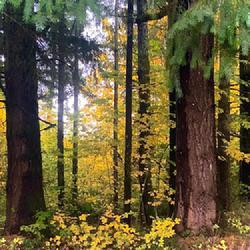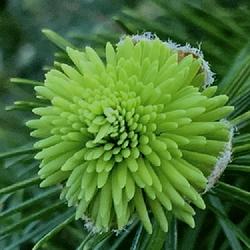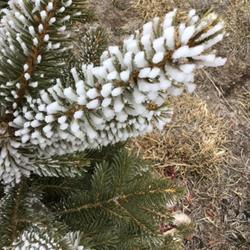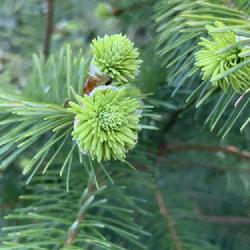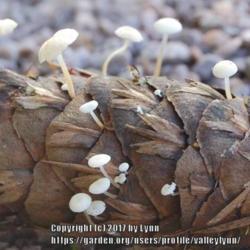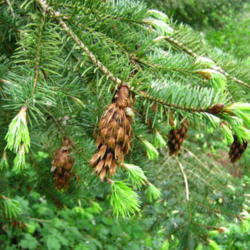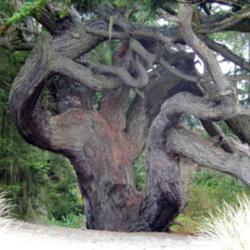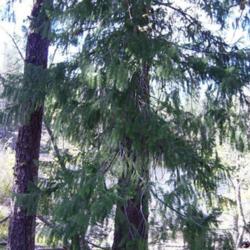Posted by
Bonehead (Planet Earth - Zone 8b) on Mar 22, 2014 11:10 PM concerning plant:
Native in the Pacific NW, from British Columbia to California, and east to Alberta and Colorado. Who can't love a Doug fir? They are everywhere in my neighborhood and make a great Xmas tree to boot. Fast growing, pest-free, easy care - revegetate the earth with these guys.
Not a true fir. Its latin name translates to 'false cypress.' Mature trees have deeply furrowed bark, which gives it protection during wildfires. The needles are arranged spirally and at the end of the twig is a distinctive lanceolate bud (shaped like a lance). The cones are 3-4" long, hang down pendantly, with three-pronged woody bracts. Folklore compares the woody bracts to the exposed hind ends of mice which have taken refuge in the cones during a fire or storm.
Long-lived tree (750 years or more), fast growth to 300', but intolerant of shade or wet soils and susceptible to root diseases. The wood is used for firewood and dimensional lumber. This is a popular species for Christmas tree farms. The needles can be boiled to a tea.

